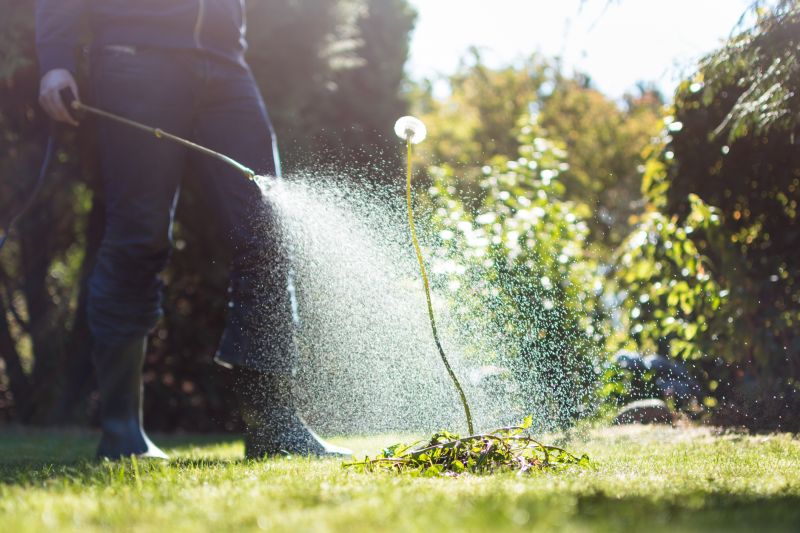Top-Rated Products For Knotweed Elimination To Safeguard Your Land
Learn about the most effective tools and solutions trusted by experts to control and remove knotweed from your property.
 Knotweed removal is a common challenge faced by property owners and landscapers alike, due to the plant's aggressive growth habits and resilience. Effective management often requires a combination of mechanical, chemical, and manual techniques tailored to the severity of infestation and specific site conditions. Selecting the right products can significantly improve the efficiency and safety of the removal process. From specialized herbicides to durable tools designed for invasive plants, there are numerous options available to help control and eradicate knotweed.
Knotweed removal is a common challenge faced by property owners and landscapers alike, due to the plant's aggressive growth habits and resilience. Effective management often requires a combination of mechanical, chemical, and manual techniques tailored to the severity of infestation and specific site conditions. Selecting the right products can significantly improve the efficiency and safety of the removal process. From specialized herbicides to durable tools designed for invasive plants, there are numerous options available to help control and eradicate knotweed.
Top Overall Option
Herbicide with Broad-Spectrum Effectiveness
A well-formulated herbicide designed for targeted application on invasive plants like knotweed can be an effective component of a removal strategy. These products typically contain active ingredients that penetrate the plant's tissues and inhibit growth, helping to suppress regrowth when used correctly. They are suitable for various environments and can be applied via sprayers or spot treatments, making them versatile for different site conditions.
Types of Products For Knotweed Removals
Herbicides and Chemical Treatments
Chemical herbicides are commonly used for knotweed control, offering targeted application options to weaken and kill the plants.
Manual Removal Tools
Tools such as shovels, mattocks, and hand pruners facilitate physical removal of knotweed, especially for smaller infestations.
Heavy-Duty Weed Pullers
Designed to grip and extract deep-rooted plants, these tools can assist in removing knotweed with minimal soil disturbance.
Root Barriers and Barriers
Physical barriers help prevent the spread of knotweed roots and rhizomes across property boundaries.
Mulching Materials
Heavy mulches can suppress knotweed growth by blocking sunlight and hindering regrowth.
Soil Solarization Sheets
Clear plastic sheets used to heat the soil and kill knotweed rhizomes through solar radiation.
Smothering Mats
Heavy fabric mats or tarps that cover knotweed patches to deprive the plants of light.
Root Cutting Devices
Specialized tools designed to cut and sever root systems, reducing regrowth potential.
Herbicide Delivery Systems
Sprayers and applicators designed for precise herbicide application to target knotweed effectively.
Biological Control Agents
In some regions, natural predators or pathogens are used to help manage knotweed populations.
Soil Excavation Equipment
Heavy machinery used to remove contaminated soil containing knotweed rhizomes in severe cases.
Electrocution Tools
Emerging technology using electrical currents to kill invasive plants at the root level.
Steam Weed Killers
High-temperature steam devices that can be applied directly to knotweed to destroy plant tissues.
Foam Herbicide Sprays
Foam formulations that stick to plant surfaces, allowing for targeted treatment of knotweed stems.
Weed Wrenches
Heavy-duty tools designed to grip and extract stubborn roots and rhizomes.
Popular Choices
Widely used for invasive plant control, these herbicides are effective when applied carefully to knotweed.
Effective for woody and invasive plants, triclopyr-based products are popular for knotweed management.
Tools like root pullers and weed wrenches are favored for their ability to physically remove plants.
Popular for small to medium infestations, these tools simplify removal efforts.
Complete kits for solarizing soil are often chosen for their ease of use and effectiveness.
Versatile sprayers are commonly used for precise application of chemical treatments.
Heavy mulch materials are frequently used to suppress knotweed regrowth in garden and landscape settings.
Durable barriers are popular for preventing spread across property lines.
Steam devices are gaining popularity for their chemical-free approach, especially in sensitive areas.
Foam formulations are favored for their targeted application and reduced drift.
In regions where permitted, natural predators are increasingly considered as part of integrated management.
In severe infestations, excavation equipment is often employed for thorough removal.
Popular for their efficiency in severing root systems and reducing regrowth.
When considering removal products, it's important to evaluate their application methods, safety profiles, and suitability for different environments. Some products are formulated for spot treatment, ideal for small patches, while others are designed for larger-scale management. Proper use and adherence to safety guidelines are essential to prevent unintended damage to surrounding vegetation or harm to the user. Additionally, combining products with ongoing management practices can help prevent regrowth and ensure long-term control.
Understanding the variety of available products can empower property owners to choose solutions that fit their specific needs. Whether dealing with a minor infestation or a more extensive invasion, having access to a range of tools and chemicals can make the process more manageable. Consulting with professionals or conducting thorough research can further enhance the effectiveness of knotweed removal efforts, leading to healthier landscapes and reduced spread of this persistent invasive plant.
Key Buying Considerations
- Severity and extent of knotweed infestation to determine appropriate product type.
- Application method suitability based on site conditions and user experience.
- Safety profiles of chemical products to protect users and surrounding vegetation.
- Environmental conditions such as soil type, moisture, and nearby plants.
- Regulatory compliance and restrictions related to chemical use in your area.
- Ease of use and whether specialized equipment or skills are required.
- Long-term management strategies to prevent regrowth after initial removal.
- Compatibility of products with existing landscape features or structures.
- Cost and availability of products for ongoing or large-scale removal projects.
- Potential impact on nearby water sources or sensitive habitats.
- Durability and lifespan of physical tools and barriers.
- Effectiveness of products for targeted application in specific areas.
- Availability of professional support or guidance for complex removals.
- Maintenance and storage requirements for tools and chemical products.
- Customer reviews and user feedback on product performance.
